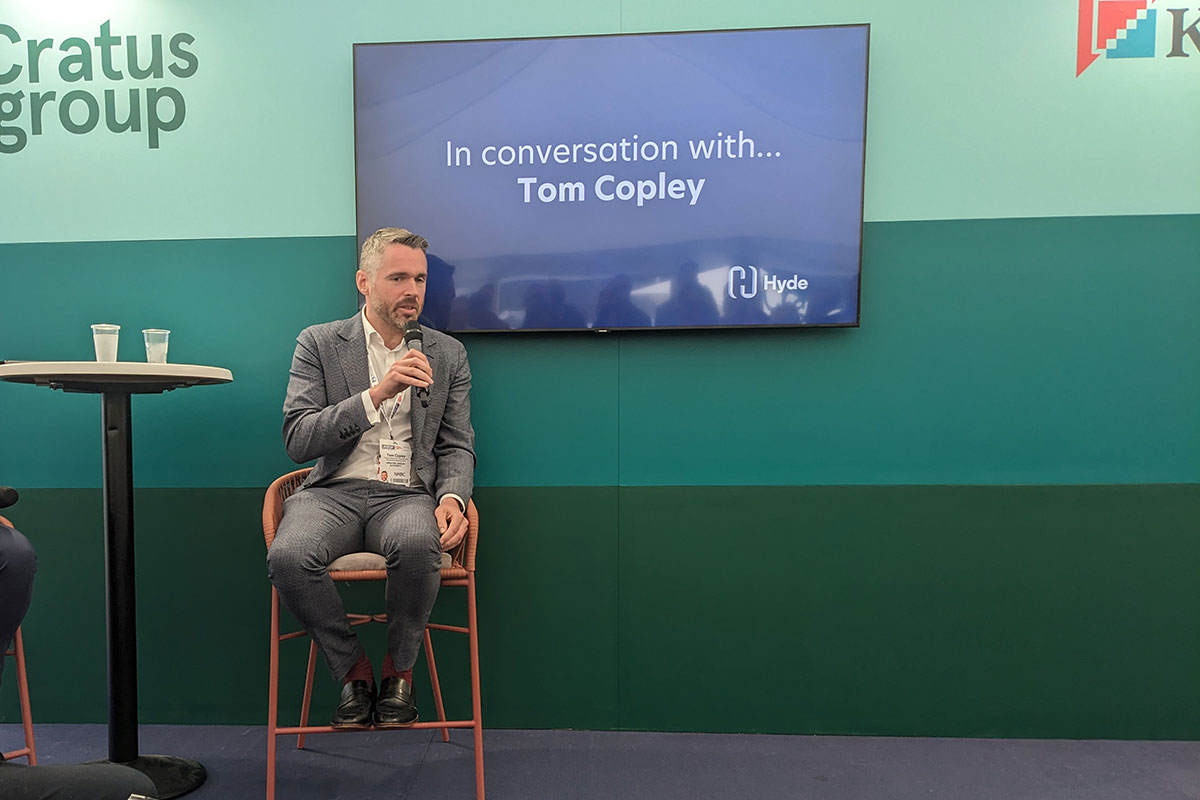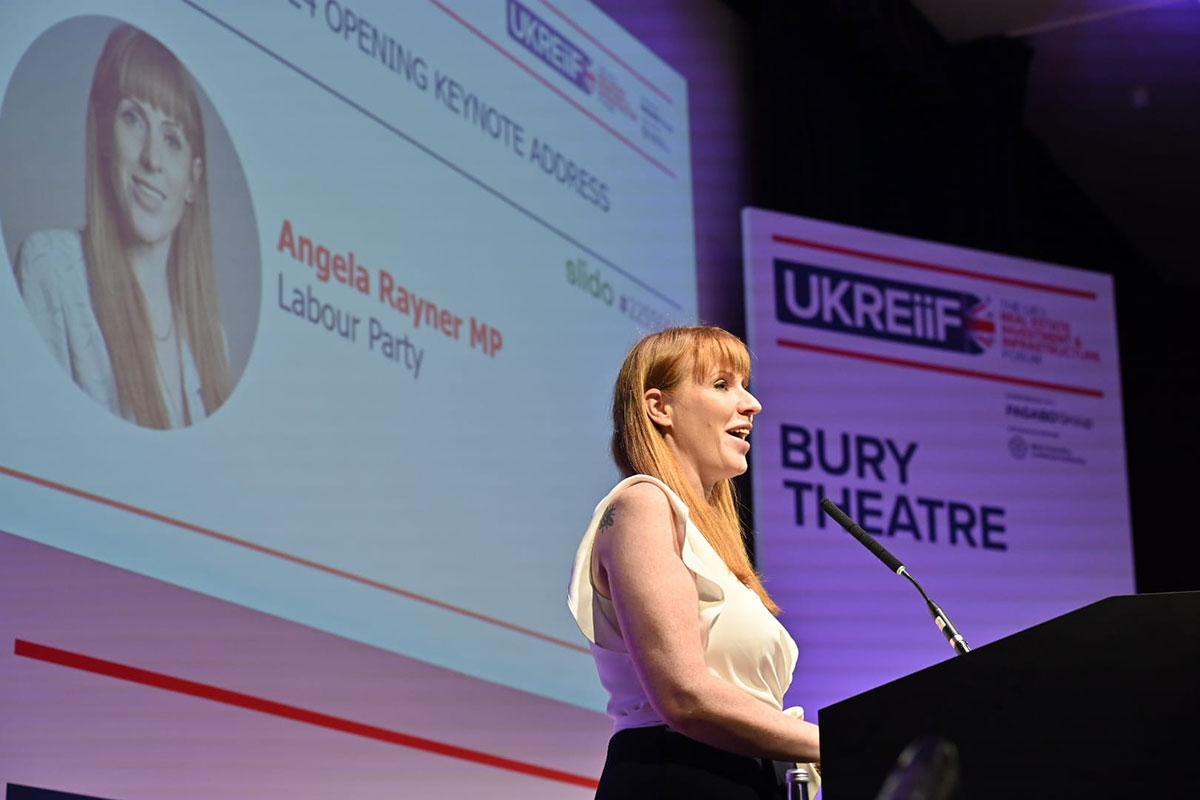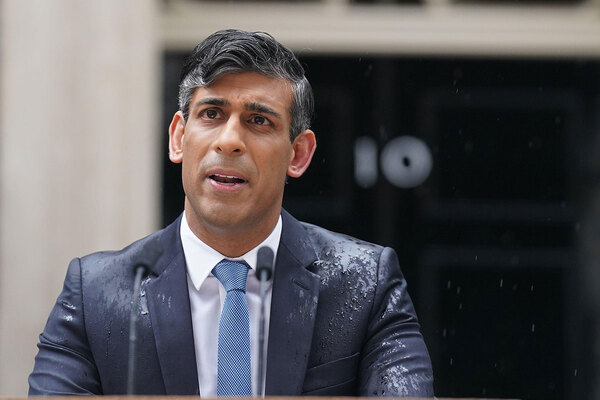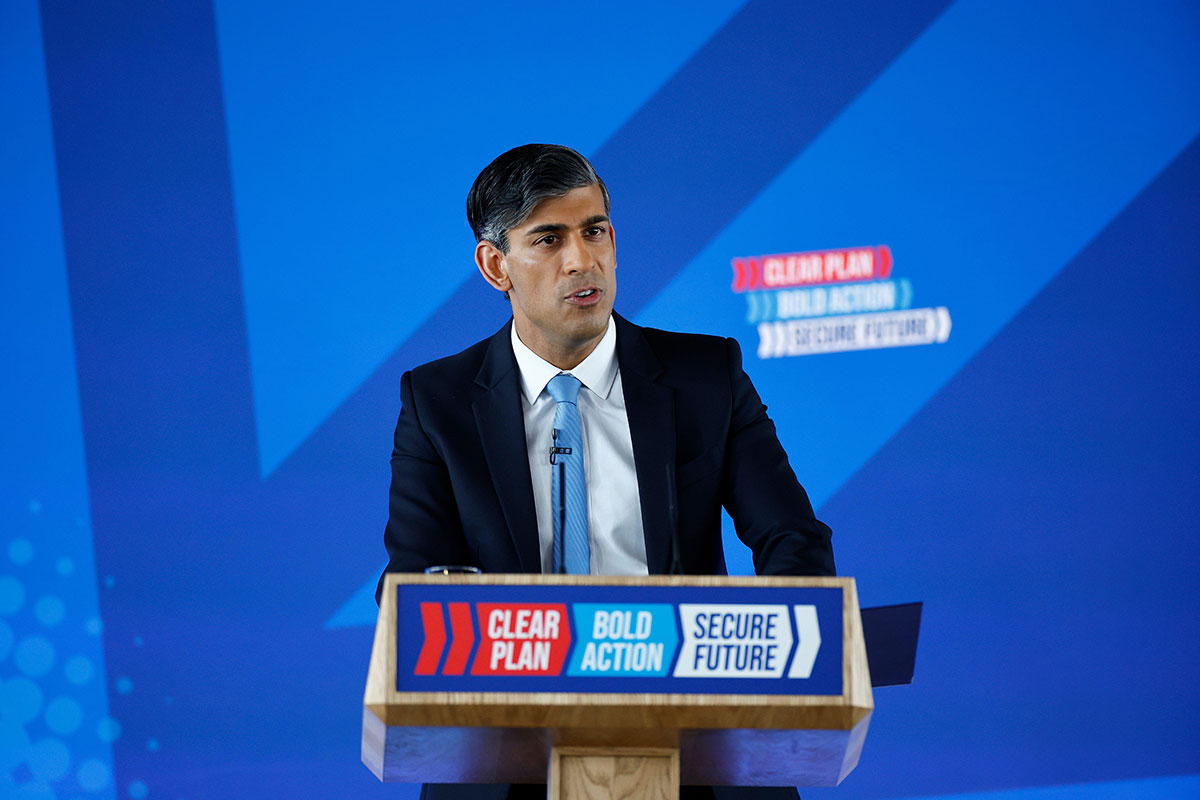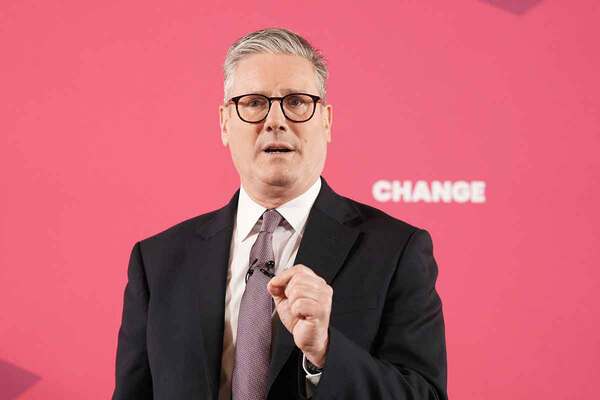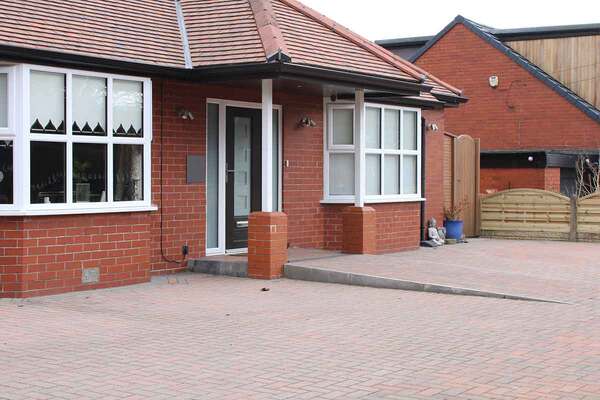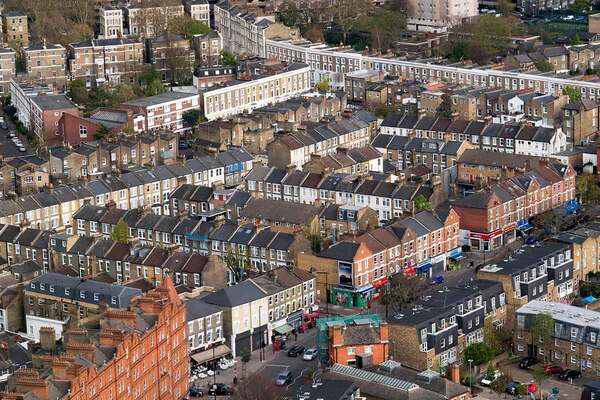You are viewing 1 of your 1 free articles
GLA housing lead calls for ‘creative ideas’ for delivery, ahead of new AHP discussions post-election
London’s deputy mayor for housing has called for the sector to put forward “creative ideas” beyond grant for housing delivery, while acknowledging that higher grant rates may be needed in the next funding programme.
Speaking at the UK’s Real Estate Investment and Infrastructure Forum (UKREiiF) conference in Leeds yesterday (22 May), Tom Copley said he anticipated that a new Affordable Homes Programme (AHP) would be one of the “first conversations” he would have with a new government.
He also made a case for “reusable and recyclable” funding solutions that would fit well within the shadow chancellor’s stated fiscal rules.
Reflecting on what a new programme might look like, Mr Copley said: “I think we are going to have to be thinking about higher grant rates, because of the enormous cost of construction.
“But grant can only be part of the picture and… there are other ways that we can help and there are other ways that we could do more if we had more from central government.”
Mr Copley suggested that a larger pot of infrastructure funding could support the Greater London Authority (GLA) to “look to partnerships between the public and private sector that might be attractive, and might help get more homes coming forward”.
The deputy mayor was speaking just hours before the prime minister announced that the general election would take place on 4 July.
Addressing delegates in the room, Mr Copley called for sector stakeholders to come forward with ideas beyond grant. “If you’ve got a creative idea, that perhaps is not just ‘please give us more grant funding’ – we know you want more grant funding – but if you’ve got an idea for how we could work together differently, more innovatively, a different way of working that would help you deliver more homes and you can give a good case for how that will deliver more additional affordable housing, we really want to talk to you.”
At the same time, he acknowledged the need for higher rates of grant, as has been seen in recent reprofiling under the current 2021-2026 AHP.
Forming part of a total £11.5bn national programme, London’s £4bn allocation is administered by the GLA in its Homes for Londoners programme. Initially, this funding was intended to support the delivery of 35,000 affordable homes, but this was subsequently revised down by around 10,000 homes because of economic conditions.
The GLA renegotiated a target range of 23,900 to 27,100 with the government in July 2023.
“[In] the 2016 to 2023 affordable housing programme, the grant that was being offered under that was an historic low. Housing associations, for a social rent unit, were getting £60,000 or £70,000; that was the tariff rate. We had a higher tariff rate for councils, recognising that they were coming back into the business of delivery after many years and needed that extra support, so they were getting £100,000.
“That was historic low levels. I mean you were talking about grant maybe covering 15 to 20 per cent on average of build costs of that programme, way down from where it used to be, particularly if you go back to the 1990s and early 2000s. So in this programme, when we got the bids back, the average grant rate was much, much higher.
“But given all of the build cost, inflation and the general economic circumstances, the rising financing costs, still that was insufficient. So the average grant rate had more than doubled from where it was in the previous programme, but we had to go out and do another round of reprofiling, as we call it.”
Associations came back with revised bids, which were signed off by the secretary of state in July last year. However, addressing the providers in the room, Mr Copley said: “even [with] those revised bids… you’re really struggling”.
Earlier this month, London mayor Sadiq Khan called for an “emergency stimulus” of £2.2bn to support the delivery of new homes.
GLA housing statistics for the financial year to the end of March 2024 show that just 1,777 starts on site were made under the 2021-26 programme, contributing with other programmes to a total of 2,358 affordable starts, and 3,244 when open-market homes were included.
This compared with 25,658 affordable starts on site in the previous financial year (27,824 including open market) under the previous AHP, which ran from 2016-2023.
Referring to the £2.2bn, Mr Copley said that this ask formed part of a position statement supported by around 27 key organisations across the housing sector, arising from the GLA’s “housing delivery task force”.
He said: “[That funding would] bring us back to the original target that we agreed with government for our Affordable Homes Programme. But that still will only be 35,000 affordable homes across that programme period. [So that’s] really important, but it doesn’t get us to where we need to be.”
Mr Copley emphasised a number of other steps the government needs to take to support supply, including agreeing a long-term rent settlement, lower public borrowing rates for councils via the Public Works Loan Board, reopening the Housing Revenue Account debt settlement, and a new round of Decent Homes funding.
The deputy mayor for housing also outlined his view that funding which, like its brownfield-land programme, was “recyclable and reusable”, would be attractive to a potential Labour government.
In 2018, the GLA received £486m of additional funding from the government to assist in the acquisition of land, remediation and infrastructure to support the delivery of 8,000 housing completions in London by 2030.
Mr Copley said: “We’ve had huge success at City Hall with the mayor’s Land Fund, which was made up of funding the mayor put forward himself. And also funding came from central government, unlocking thousands of homes. We have a target to unlock 8,000 [and] I think we’re up to 16,000 now through the fund.”
He added: “We have managed to achieve 50 per cent affordable housing across that and we made it for the most part recyclable, so we get his funding back.
“[Looking] ahead to a future government, I think one of our key things that I will be making the case for, and I hope with the support of the sector, is a large amount of investment money the GLA can deploy that is recoverable like that, that will be available for us to buy sites to bring forward for development, to invest in more innovative ways to provide loan funding, and indeed to unlock homes through spending on infrastructure as well.”
He added: “I think if the pitch on that is that this funding is recyclable and reusable – it’s an investment – I think that fits very well with what [shadow chancellor] Rachel Reeves has set out in terms of those fiscal rules.”
Increased grant
In a session this morning (23 May) addressing the ‘economic case for more social housing’, the chief executive of L&Q, the London-based housing association, emphasised the need for increased subsidy to continue delivery through difficult operating and economic conditions.
Fiona Fletcher-Smith referred to the 109,000-home landlord’s anticipated £3bn spend on its existing stock over the next decade and said this meant there was “very little money left” for it to subsidise the building of new homes.
“If you want subsidised housing, you’ve got to provide subsidy,” Ms Fletcher-Smith said. “And although colleagues in Homes England and the GLA are wonderful in helping us, generally, housing associations will put in about 75 per cent of funding from their own resources.
“We simply don’t have those resources in a lot of cases now, particularly in those highly unaffordable areas of London and the South East and parts of other major conurbations.”
Sign up for Social Housing’s weekly news bulletin
Social Housing’s weekly news bulletin delivers the latest news and insight across finance and funding, regulation and governance, policy and strategy, straight to your inbox. Meanwhile, news alerts bring you the biggest stories as they land.
Already have an account? Click here to manage your newsletters.
RELATED
